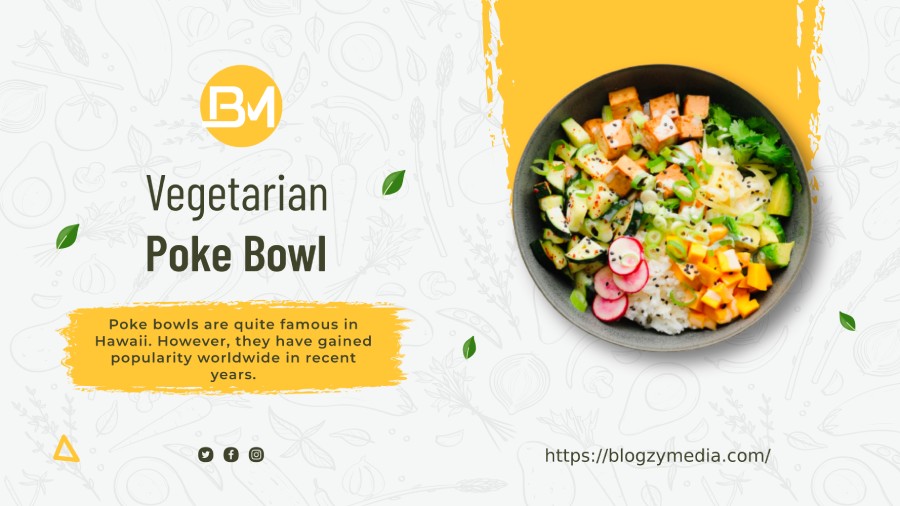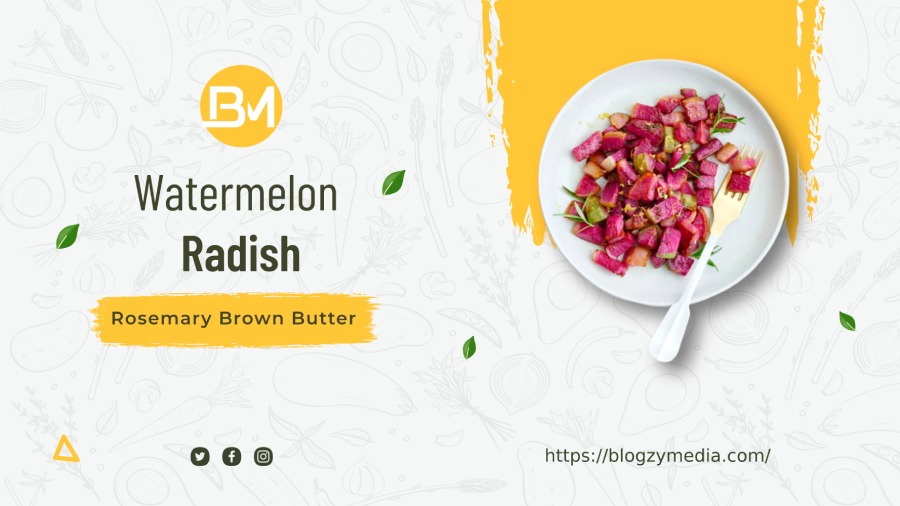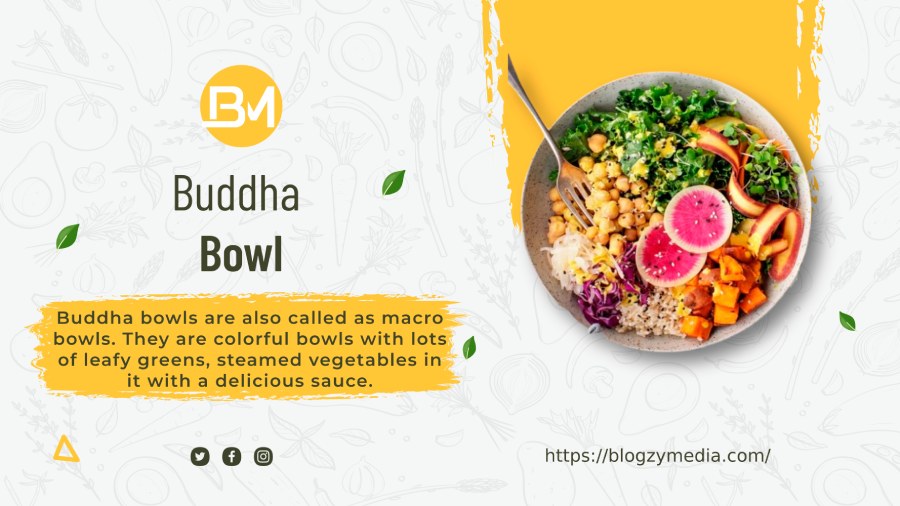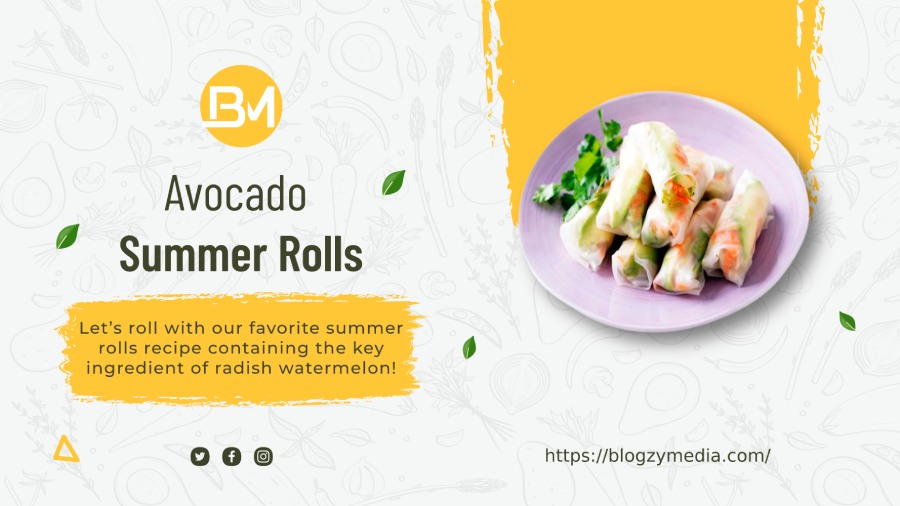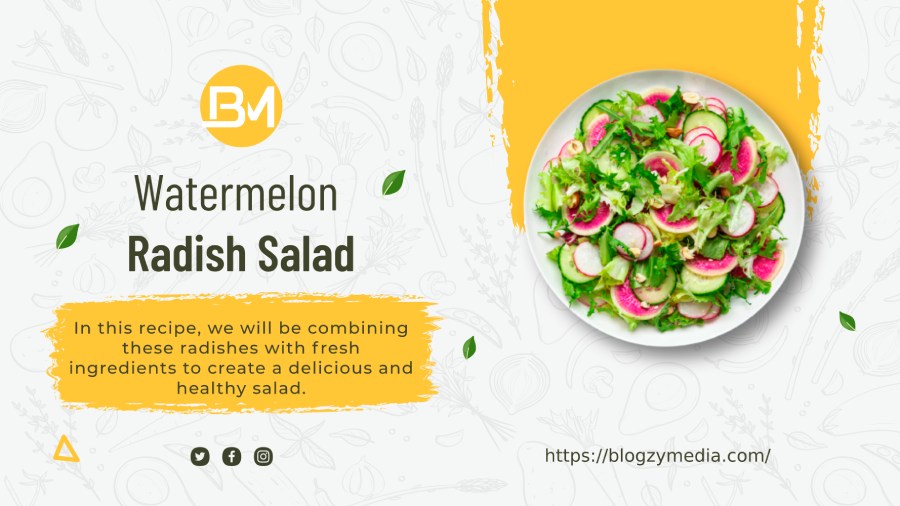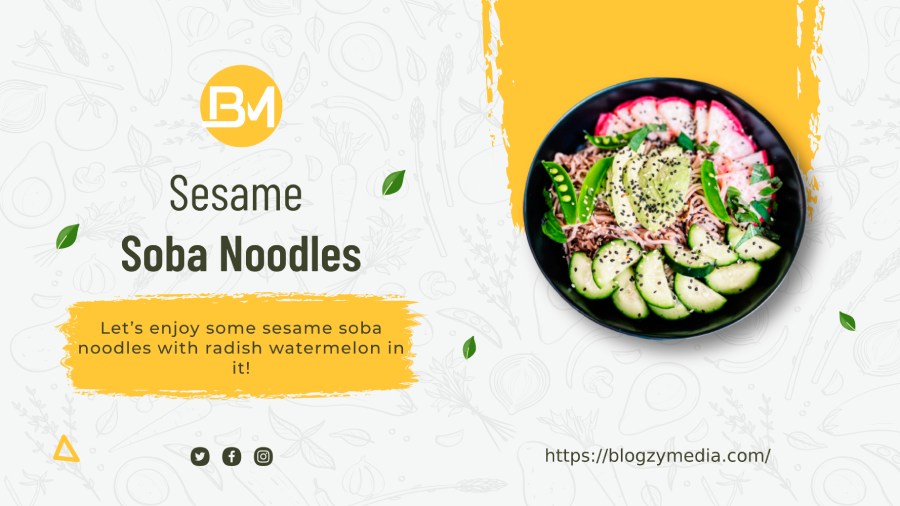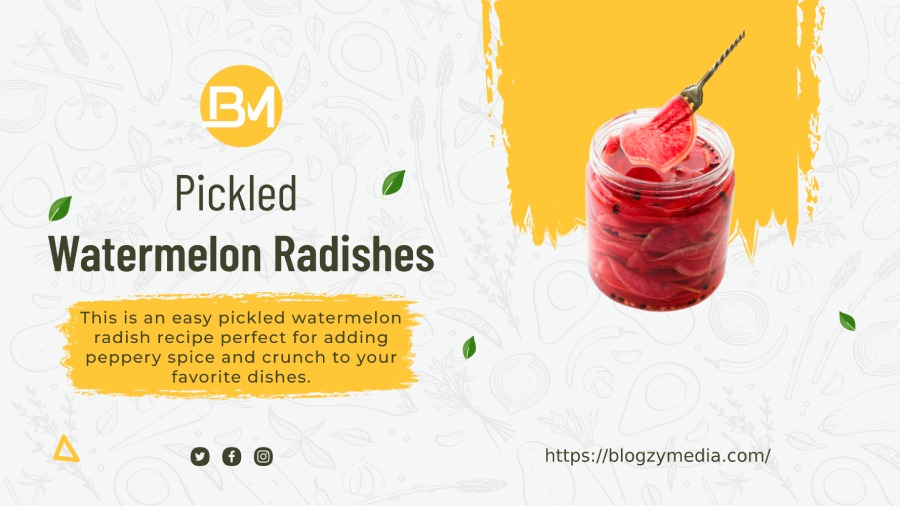
Watermelon Radish: Delicious & Mouthwatering Recipe (2025)
Introduction
watermelon radish is also called Rose Heart, Beauty Heart, Asian Red Meat, Misato, and Shinremei. It comes from the daikon radish family. But this radish is smaller and more round than the regular white daikon radish.
These are unique and colorful additions to any plate. They have vibrant pink flesh and a green outer layer. This makes them visually appealing. They also have a strong, delicious flavor.
In this blog, we’ll look at a special type of radish. We’ll talk about its health benefits and downsides. Plus, we’ll give you 8 tasty recipes to try that will make you love this veggie.
So, let’s dive in, and uncover the delicious mystery!
What are watermelon radishes?
It is a type of radish from the cabbage family. These radishes have a colorful look like a watermelon.
The outer skin of a Roseheart Radish is usually green. The inner part can be different shades of pink, from pale to dark magenta. This creates a nice visual effect with the contrasting colors.
Unlike white radishes, these radishes are quite big to medium in size. They are round in shape with a green outside and a pink or red inside that looks like a watermelon.
They are a bit sweet. They also have a crisp, refreshing texture. That makes them a popular addition to salads and sandwiches.
This vegetable is also rich in healthy things like folate, potassium, and vitamin C. This makes it a healthy and tasty addition to any meal.
What Does Watermelon Radish Taste Like?
It has a mild and slightly peppery taste. The flavor is not as pungent as some other radish varieties. When you bite into a shinri-mei, you’ll experience a subtle spiciness with a hint of sweetness.
The radish has a crisp and refreshing texture. People often eat it raw. The radish has vibrant colors, from green on the outside to pink or magenta on the inside. This makes the radish look appealing.
Overall, the taste is a pleasant combination of peppery and sweet, making radish watermelon versatile for various culinary uses.
How is watermelon radish typically used in salads?
Radishes add color and a mild pepper taste to salads. You can slice or grate them for a crunchy texture. Add them to green salads for a fresh crunch. Mix them with other veggies for a colorful salad.
Use radishes in different salad recipes – toss them in vinaigrette or use as a colorful garnish. Radishes are versatile and make salads more unique and delightful.
Health Benefits & Drawbacks Of Radish Watermelon
Watermelon radishes are delicious. They also have many nutritional benefits that are great for your health. Some key benefits of watermelon radish include.,
Health Benefits
-
May aids in digestion
This veggie has lots of fiber and low calories. Fiber helps with digestion. It makes you feel full and has a good effect on bowel movements. This can reduce constipation and gas.
Watermelon radish has nutrients that help digest food and absorb other nutrients. These benefits make watermelon radish a great part of a healthy, balanced diet for better digestion.
-
Helps in reducing weight
Fiber in radishes makes you feel full for a long time. This can help you eat fewer calories. Radishes also have Vitamin C. Vitamin C is linked to weight loss and better metabolism.
Additionally, the water content in Roseheart Radish can help to keep you hydrated, which can also support weight loss efforts. Overall, it would be a smart choice to incorporate this veggie to support your healthy weight loss journey.
-
Boosts immunity
Since they are packed with nutrients, this watermelon radish also helps boost immunity. They are a great source of Vitamin C, an antioxidant that helps to protect the body from free radicals that can cause cell damage, and weaken the immune system.
Additionally, they contain zinc, which is crucial for a strong immunity system. Zinc helps to regulate the production of immune cells, and is involved in the development and maturation of these cells.
-
Anti-illness
These are considered anti-illness veggies due to their high nutritional content. They are rich in minerals and vitamins, which boost the body’s immunity and fight illnesses.
The antioxidants in watermelon radishes act as pain-relieving agents that reduce swelling and defend from degenerative diseases like emphysema and cancer.
-
Protects your heart
All thanks to anthocyanins, radishes help in reducing heart disease. Anthocyanins also help reduce blood pressure while decreasing inflammation in the arteries.
These nutrients help improve blood flow and keep blood pressure healthy. This is important for a good heart. Vitamin C is also an antioxidant. It helps protect against inflammation and stress, which can lead to heart disease.
Drawbacks
Although they are beneficial to health, here are some of their drawbacks that you also need to consider.
-
Bitter taste
Some people find watermelon radish to be too bitter to enjoy. This bitterness can be overpowering, and make the radish unpleasant to eat.
-
Toughness
They can be quite dense, and brittle, which makes them hard to chew, and digest. To make them more tender, try grating or shredding them, or lightly pickling them before use.
-
Limited usage
While colorful radishes look nice in salads and sandwiches, they may not be as versatile as other radish types. Their dense texture can make them hard to cook with. They may not work as well in dishes like stir-fries or soups.
Watermelon Radish Recipe: 08 Best Ways To Use
You can enjoy it pickled, raw, or even add it to your vegetable soups. Here are our 8 best ways you can use them!
#1 Vegetarian Poke Bowl
Poke bowls are quite famous in Hawaii. However, they have gained popularity worldwide in recent years. Since it’s a vegetable poke bowl, it won’t include raw fish as is in the typical Hawaiian recipe.
This dish generally contains a bed of rice or other grains, topped with an array of fresh vegetables. We’ll take watermelon radishes as one of the major ingredients in this recipe.
Step 1: Prepare the rice or grains with regard to package instructions, and keep them aside.
Step 2: In a small bowl, whisk together the soya sauce, rice vinegar, honey, sesame oil, garlic, and ginger to prepare the dressing.
Step 3: Take a large bowl, and mix together the cucumber, edamame, avocado, carrots, and radish watermelon.
Step 4: Toss the veggies with the seasoning until they are completely coated.
Step 5: To make the poke bowl, put some rice or grains in a bowl. Then add the vegetable mix on top. Sprinkle with sliced green onions and sesame seeds.
#2 Watermelon Radish with Rosemary Brown Butter
To prepare them sauteed, you need to first prepare the rosemary brown butter. Follow the instructions given below.
Step 1: Heat a large skillet over medium-high heat, add the butter to it, and let it melt.
Step 2: Once the butter has melted, and begins to foam, add the chopped rosemary to the skillet.
Step 3: Cook the rosemary for about a minute, stirring frequently, until it becomes fragrant.
Step 4: Add the sliced watermelon radishes to the wok, and turn them in the rosemary butter at the same time.
Step 5: Alternatively, you can add them to salads or sandwiches as a topping.
Step 6: Season the sauteed radishes with salt, and pepper to taste.
Serve them hot as a side dish or as a garnish for salads or sandwiches.
#3 Buddha Bowl
Buddha bowls are also called macro bowls. They are colorful bowls with lots of leafy greens and steamed veggies. They also have a tasty sauce. Here is a step-by-step recipe to make this bowl
Step 1: Rinse quinoa in a fine-mesh strainer, and add to a medium saucepan with 2 cups of water. Simmer for at least 15-20 minutes to boil it. Fluff with a fork, and set aside to cool.
Step 2: Take a small bowl, and whisk together tahini, maple syrup, apple cider vinegar, soy sauce, minced garlic, and a pinch of salt and pepper. Thin out the water by adding a tablespoon or two if the dressing is too thick.
Step 3: Divide cooked quinoa, chickpeas, avocado, grated carrot, sliced cucumber, and Shinremei into a bowl.
Step 4: You can use a mandolin slicer or a sharp knife to make thin rounds.
#4 Watermelon Radish Appetizer Bites
These appetizer bites are a simple, and tasty way to enjoy the unique flavor, and texture of this radish variety. Here’s how you can make them:
Step 1: Start by washing and peeling them. Slice it into thin rounds using a slicer, or a chef’s knife.
Step 2: Combine the softened cream cheese with the shredded chives in a small bowl.
Step 3: On each slice of watermelon radish, spread a coating of cream cheese.
Step 4: Arrange the radish slices on a serving platter, and garnish with additional chopped chives, if desired.
#5 Avocado Summer Rolls
Let’s roll with our favorite summer rolls recipe containing the key ingredient of radish watermelon!
Step 1: Prepare the dipping sauce by whisking together the rice vinegar, soy sauce, honey, lime juice, sesame oil, and water in a small bowl. Add salt and pepper to taste. Set aside!
Step 2: Prepare the rice paper wrappers according to package instructions. Once soft, and pliable, place them on a clean work surface.
Step 3: Now, layer a few slices of avocado, watermelon radish, red onion, mint, cilantro, and basil in the center of each rice paper wrapper, leaving a small border around the edges.
Step 4:Fold the bottom part of the rice paper up over the filling. Then, fold the sides towards the middle. Roll the wrapper tightly from the bottom to the top to make a summer roll. Repeat this process with the remaining ingredients.
Step 5: Serve the summer rolls with the dipping sauce on the side.
#6 Watermelon Radish Salad
In this recipe, we will be combining these radishes with fresh ingredients to create a delicious and healthy salad.
Step 1: Begin by washing, and thinly slicing them into rounds. In a large bowl, place sliced radishes
Step 2: Add the mixed greens to the bowl with the watermelon radish.
Step 3:Add crumbled feta cheese, chopped pistachios, fresh mint leaves, and fresh cilantro leaves on top of the salad.
Step 4: In a separate bowl, mix the olive oil, lemon juice, salt, and pepper.
Step 5: Toss the salad gently with the dressing after it’s been drizzled over.
With a simple dressing, this salad has fresh ingredients. It’s healthy, tasty, and easy to make. You can enjoy it!
#7 Sesame Soba Noodles
Let’s enjoy some sesame soba noodles with radish watermelon in it!
Step 1: Mix the sesame sauce with the noodles mixture and toss until well combined.
Step 2: Whisk together the toasted sesame oil, soy sauce, rice vinegar, honey, grated fresh ginger, minced garlic, sesame seeds, and a pinch of salt, and pepper.
Step 3: Now, combine the cooked and cooled soba noodles, thinly sliced watermelon radishes, and thinly sliced green onions.
Step 4: Toss the satay sauce over the noodle’s stuff, and toss until all of it is covered.
Step 5: Depending on the seasoning, add more salt or pepper if necessary.
Step 6: Before serving, refrigerate the sesame soba salad for about 30 minutes.
Step 7: Garnish with additional sesame seeds, and lime wedges, if desired.
#8 Pickled Watermelon Radishes
Step 1: Wash and thinly slice the Shinremei, either using a sharp knife or mandoline slicer.
Step 2: In a saucepan, mix rice vinegar, sugar, salt, and water. Heat the mixture on medium and stir occasionally until the sugar and salt dissolve.
Step 3:Let the mixture cool down completely after taking it off the heat.
Step 4:Place the sliced radishes in a clean jar.
Step 5:Once the vinegar mixture has cooled, make sure the radishes are fully covered in it.
Step 6: Put the lid on the jar. Store it in the fridge for at least 1 day before serving.
Conclusion
So, that’s what you need to know about watermelon radishes. We also talked about the health benefits and drawbacks of these radish types above. Check those out.
FAQS
Q.1 Should watermelon radish be refrigerated?
Yes, you can store them in a cool place like a refrigerator.
Q.2 Can you eat the skin of a radish watermelon?
First of all, don’t peel them. However, you can slightly peel them before use if there are some undesired spots.
Q.3 Which part of the watermelon radish is not edible?
All parts of the radish are edible. Even its leaves and roots are often cooked or prepared differently.
Q.4 Is it OK to eat radishes every day?
Although radishes are safe to consume, we’d like to recommend you have them in limit or avoid them on a regular basis if you have thyroid problems.
Q.5 Where did the watermelon radish come from?
Originally it came from China where it has been cultivated for centuries. It was later introduced to Europe and North America where it gained popularity as a decorative and flavorful addition to salads and dishes.


